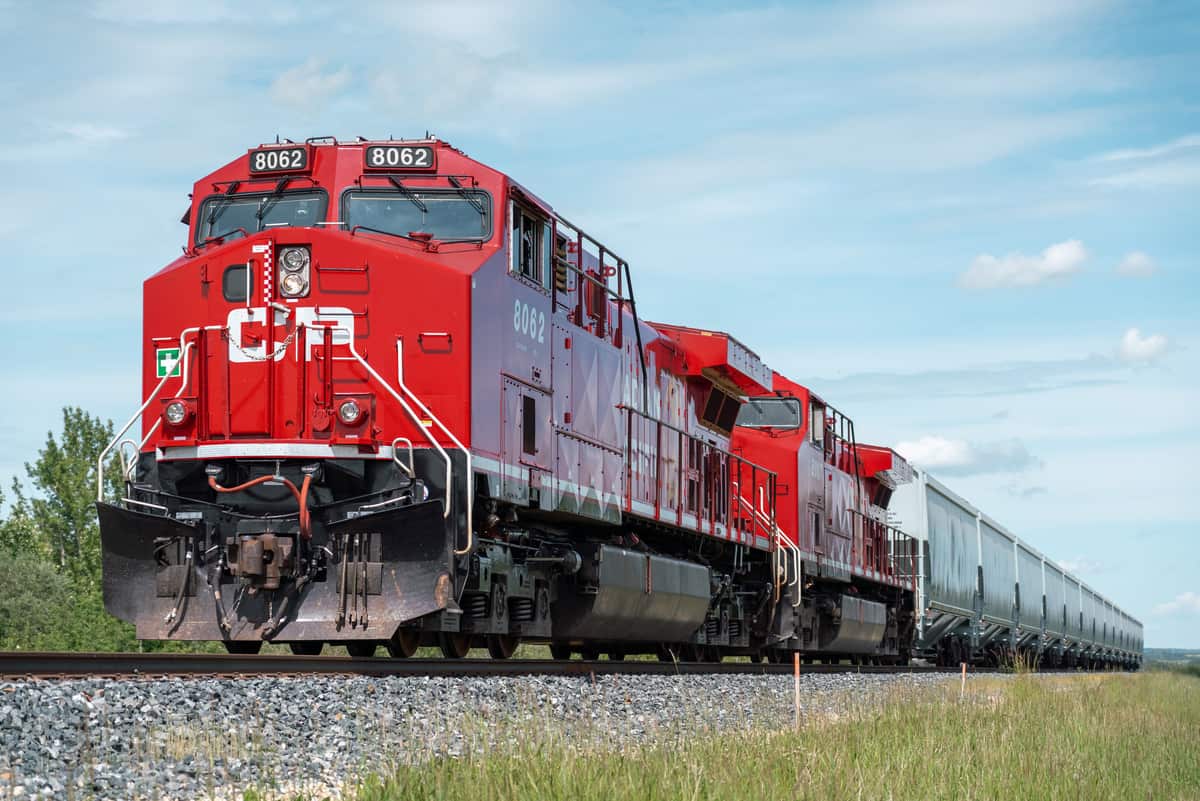Canadian Pacific (NYSE: CP) isn’t planning on taking part in a bidding war with rival Canadian railway CN (NYSE: CNI) to acquire Kansas City Southern (NYSE: KSU), CP’s CEO said Wednesday.
“We’re not considering changing anything with our bid. We’re focused on getting our deal, which represents great value for the CP shareholder, the KCS [Kansas City Southern] shareholder,” CP President and CEO Keith Creel said Wednesday afternoon to investors during CP’s earnings call to discuss first-quarter 2021 results.
CP and Kansas City Southern (KCS) last month informed the Surface Transportation Board (STB) of how they plan to merge operations, while CN on Tuesday announced that it will seek to acquire KCS. For both combinations, the end result would be a railroad spanning both coasts of Canada and then south to the U.S. and Mexico.
CN has offered KCS and its shareholders a cash-and-stock transaction valued at $33.7 billion, or $325 per share, while CP has offered a deal worth $29 billion.
The March agreement between CP and KCS is the one that has been put forward to the STB, according to Creel. STB is the regulatory body charged with reviewing and approving CP’s request to acquire KCS.
“That’s what we’re focused on. There’s no need to discuss raising leverage. There’s no need to discuss paying more money. It stands alone on its own merits,” Creel said.
Creel said CP’s bid is the better offer because it is the most likely one to be approved by STB. CP has submitted more than 400 letters to STB in support of the merger from shippers and other stakeholders, and CP and KCS leaders say their railroads’ networks don’t compete with each other.
Creel also said he didn’t believe that the right value proposition for its shareholders is to use the company’s balance sheet as a way to increase the merger offer’s financial leverage.
In contrast, because CN and KCS’ networks overlap in certain areas — although CN and CP disagree over how much overlap there is — CN’s merger application is more complicated and is less likely to pass STB muster, according to Creel. Because of that uncertainty and uncertainties over whether the board will grant CN to establish a voting trust as part of the acquisition process, KCS shareholders will lean into CP’s offer, Creel said.
“It comes down to doability. It comes down to: Can you get the deal done? … The voting trust is the trigger here,” Creel said.
He continued, “The STB will not want KCS to go into trust with so much uncertainty about whether it comes out as part of CN or not.”
CP management spent a significant portion of its earnings call defending the proposed merger and pointing out how CN’s proposal would decrease competition and leave shippers stranded because of a lack of options.
“I don’t think they [CN] really know what growth this may or may not create. They obviously haven’t done their homework or understand the markets, or worse yet, they have and they prefer not to speak to the adverse impacts and the lack of growth, the lack of stifled competition that [a CN-KCS merger] represents. … I’m thinking about the ag shipper or the chemical shipper or the lumber shipper that gets stranded because of this proposal,” Creel said.
Second-quarter outlook
Like other Class I railroads that have reported first-quarter results so far, CP expects volumes to improve in the second quarter and into the back half of 2021. Potential areas of growth include grain, automotive, potash and intermodal, according to CP Chief Marketing Officer John Brooks.
“While manufacturers have most recently been challenged by the chip shortage, we focused with our OEMs on those vehicles with high demand which are manufactured on our lines,” Brooks said of CP’s automotive segment. “We expect some continued impact to production and rail loading volumes over the next few weeks. However, current customer forecasts show improvements as we move through May. I continue to expect to grow auto revenues at a strong double-digit pace, and I see opportunity in the future for further utilizing our land holdings to grow in this space.”
Other growth areas include forest products and lumber, as well as CP’s energy, chemicals and plastic segment minus crude oil, according to Brooks. CP recently added about 125 center beam cars to its fleet, which will benefit forest products.
As demand for service grows in 2021, CP intends to continue utilizing longer and heavier trains, which in turn decreases crew starts and increases train crew productivity, Creel said. These measures will ensure CP has network capacity available to handle an increase in rail volumes, he said.
“We have capacity. Obviously it depends on when it comes and where it comes, and we control that. We’re careful — very careful not to overcommit and under-deliver on our railroad. That’s value destruction, that’s not value creation. But resources are not an issue,” Creel said.
CP reported Wednesday that its freight revenue for the first quarter of 2021 slipped 4% to CA$1.96 billion amid flat year-over-year volumes and a 2.5% decline in operating expenses.
One Canadian dollar equals 80 cents in U.S. currency.
Net income for the first quarter of 2021 jumped 47% year-over-year to CA$602 million, or CA$4.50 per diluted share, from CA$409 million, or CA$2.98 per diluted share, in the first quarter of 2020.
Subscribe to FreightWaves’ e-newsletters and get the latest insights on freight right in your inbox.
Click here for more FreightWaves articles by Joanna Marsh.











